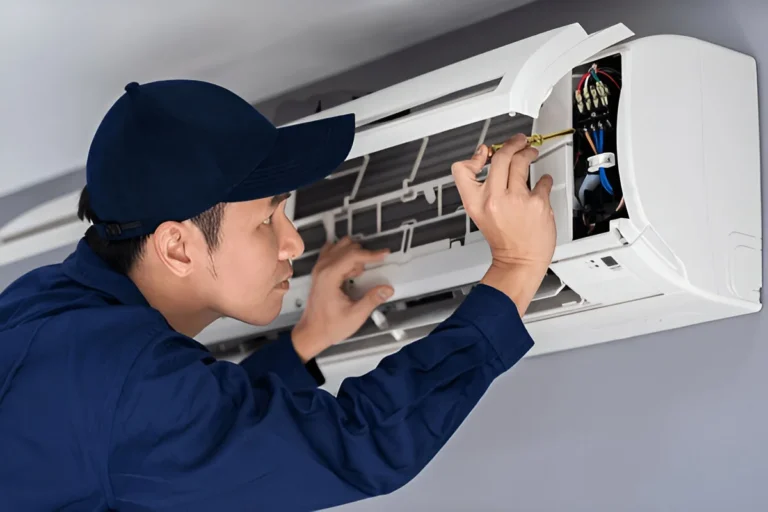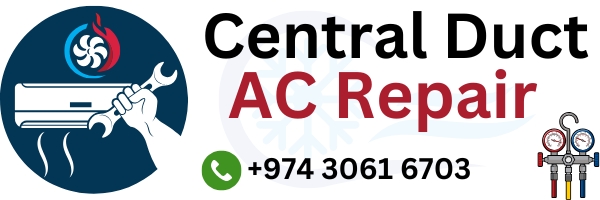Split HVAC Repair

Split HVAC Repair: Troubleshooting and Fixes for Common Issues
Split HVAC systems are among the most popular types of heating, ventilation, and air conditioning units used in residential and commercial spaces. These systems consist of two main components: the indoor unit (evaporator coil) and the outdoor unit (compressor and condenser). They are known for their quiet operation, energy efficiency, and ease of installation. However, like any mechanical system, split HVAC units can experience issues over time. Proper repair is essential to ensure optimal performance and longevity.
Here’s a guide to troubleshooting and repairing common issues with split HVAC systems.
1. No Cool Air / Warm Air Blowing
One of the most common issues is when the system isn’t cooling or heating effectively. Here’s what you should check:
Possible Causes and Fixes:
-
Thermostat Settings:
- Cause: The thermostat may not be set correctly.
- Fix: Ensure that the thermostat is set to the desired temperature and the system is set to “cool” or “heat” mode. Check if the thermostat is in the correct operating range and has fresh batteries (if applicable).
-
Clogged Air Filters:
- Cause: Air filters trap dirt and debris, and when they become clogged, airflow is restricted, causing poor performance.
- Fix: Turn off the unit, remove the air filter, and clean or replace it if it is too dirty.
-
Refrigerant Leak:
- Cause: A refrigerant leak can cause the system to lose its cooling power.
- Fix: If you suspect a refrigerant leak, you’ll need to hire a professional to locate and repair the leak. Once repaired, the system must be recharged with the correct type and amount of refrigerant.
-
Frozen Evaporator Coils:
- Cause: Frozen coils can prevent the system from cooling or heating properly. This is usually caused by low refrigerant, poor airflow, or a clogged air filter.
- Fix: Turn off the system and allow the coils to defrost. Once thawed, inspect the airflow, clean the filter, and check refrigerant levels.
-
Compressor Failure:
- Cause: A faulty compressor can prevent the system from cooling properly.
- Fix: If the compressor is damaged, it may need to be replaced. This is typically a job for a professional technician, as compressor issues can be complex and require specialized tools.
2. Unit Not Turning On
Sometimes, the HVAC unit might not turn on at all. Here’s how to troubleshoot:
Possible Causes and Fixes:
-
Power Supply Issues:
- Cause: The unit may not be receiving power due to a tripped breaker or a blown fuse.
- Fix: Check the circuit breaker or fuse box to see if the breaker has been tripped or the fuse is blown. Reset the breaker or replace the fuse if necessary.
-
Faulty Thermostat:
- Cause: A malfunctioning thermostat can prevent the HVAC unit from receiving the signal to turn on.
- Fix: If the thermostat is not working correctly, try recalibrating it or replacing the batteries. If it continues to malfunction, consider replacing the thermostat.
-
Blown Capacitors:
- Cause: Capacitors help the fan and compressor motor start. If a capacitor fails, the unit may not start.
- Fix: A professional technician should inspect and replace the capacitor if necessary.
3. Strange Noises
If your HVAC system is making strange or unusual noises, it could indicate a problem:
Possible Causes and Fixes:
-
Rattling or Vibrating Sounds:
- Cause: Loose components, like screws or panels, can cause rattling or vibrating noises.
- Fix: Inspect the outdoor unit and tighten any loose screws or panels. Check for loose ductwork or vents inside the home.
-
Grinding or Screeching Noises:
- Cause: These noises may indicate issues with the fan motor or blower.
- Fix: Turn off the system immediately and inspect the motor or blower for wear and tear. If the motor is damaged, it may need to be replaced.
-
Hissing Noises:
- Cause: A hissing noise could indicate a refrigerant leak or air trapped in the system.
- Fix: If the hissing noise is coming from the refrigerant line, this may be a refrigerant leak, and the system will need professional service to locate and repair the leak.
4. Water Leaks Around the Unit
Water leakage around the indoor or outdoor unit can be a sign of a malfunctioning condensate drainage system.
Possible Causes and Fixes:
- Clogged Drain Line:
- Cause: The condensate drain line can become clogged with algae, dirt, or debris, leading to water buildup.
- Fix: Turn off the unit and locate the drain line. Use a wet/dry vacuum to clear the clog. Clean the drain line regularly to prevent future blockages.
- Frozen Coils:
- Cause: Frozen coils can cause water to leak when the ice melts.
- Fix: Allow the coils to defrost by turning off the system. Check for issues like low refrigerant or poor airflow that could have caused the freezing.
5. Weak Airflow
If you notice weak airflow from the vents, it could be due to several factors:
Possible Causes and Fixes:
-
Dirty Air Filters:
- Cause: A dirty or clogged filter can restrict airflow.
- Fix: Check the air filter and replace it if necessary. A clean filter will improve airflow and efficiency.
-
Duct Leaks:
- Cause: Leaks in the ducts can reduce airflow and cause energy loss.
- Fix: Inspect the ductwork for leaks or damage. Seal any gaps with duct tape or mastic sealant, and consider professional duct sealing if leaks are widespread.
-
Faulty Fan:
- Cause: A malfunctioning fan can cause weak airflow or no airflow at all.
- Fix: Check the fan motor and blades for damage or wear. If the motor is faulty, it may need to be repaired or replaced.
6. Short Cycling (Unit Turns On and Off Frequently)
Short cycling occurs when the system turns on and off too frequently, which can cause wear and tear.
Possible Causes and Fixes:
-
Improperly Sized Unit:
- Cause: If the unit is too large for the space, it may cool too quickly and shut off before completing the cooling cycle.
- Fix: Ensure the unit is the correct size for the area. If necessary, consult an HVAC professional to resize the system.
-
Dirty Air Filter or Coils:
- Cause: Clogged filters or dirty coils can cause the system to overheat and shut off prematurely.
- Fix: Clean or replace the air filter and clean the coils to ensure proper airflow.
-
Low Refrigerant:
- Cause: Low refrigerant levels can cause the system to overheat and shut off.
- Fix: Check for refrigerant leaks and repair them. Recharge the system once the leak is fixed.
